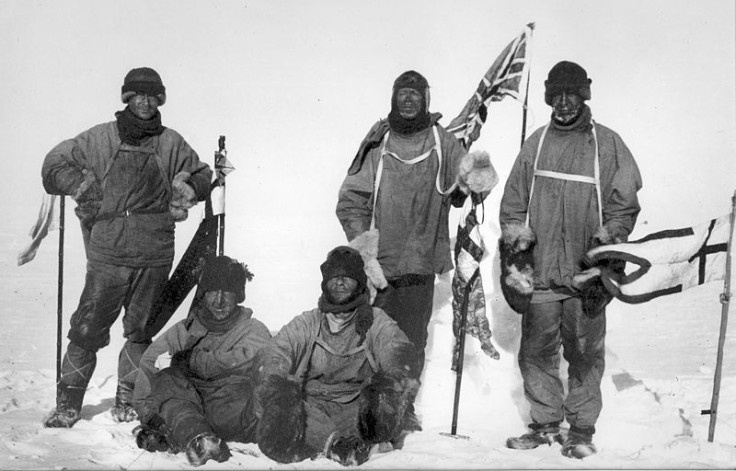100-Year-Old Notebook Found In Antarctica Sheds Light On Early Days Of Exploration [PHOTO]

Before regular air travel and state-of-the-art thermal wear, very few people had ever ventured to, let alone survived, Antarctica’s South Pole. But the artifacts left behind by the region’s first pioneers shed light on the early days of Antarctic exploration. Scientists recently uncovered the 100-year-old notebook of one of the first people to endure a journey to the coldest place on Earth. The diary contained the pencil notes of British explorer George Murray Levick, a member of Capt. Robert Falcon Scott's doomed polar expedition, according to the Antarctic Heritage Trust in Christchurch, New Zealand.
"It's an exciting find,” Nigel Watson, executive director of the Antarctic Heritage Trust, which has preserved and displayed the notebook, said in a statement. "The notebook is a missing part of the official expedition record .… We are delighted to still be finding new artifacts.” While Levick ultimately survived his stint in Antarctica, many of his colleagues were not so lucky.
A notebook from Captain Scott’s 1910-1913 expedition has been found Antarctica http://t.co/MVIEieAVV5 pic.twitter.com/y1ltIgNZEC
— Archaeology Magazine (@archaeologymag) October 22, 2014Levick left the notebook behind at his expedition’s base camp at Cape Evans, where researchers found it outside of a hut during last year’s summer melt. The diary detailed photographs Levick took in 1911 while at a camp in Cape Adare, a peninsula in Antarctica’s Victoria Land region. Much of the diary had suffered water damage, but researchers were able to separate and digitize the pages before rebinding the notebook for display, according to Discovery News. The notes included where the photographs were taken, their exposures and their subjects.
Levick, a zoologist and surgeon who was best known for his observations of Antarctica’s Adélie penguins, was part of a scientific expedition led by British Royal Navy officer Scott to Antarctica. The journey was known as the Terra Nova Expedition for the ship the men had traveled. Scott’s purpose was to be the first man at the South Pole, but upon reaching their goal on Jan. 17, 1912, his team discovered that Roald Amundsen's Norwegian team had beaten them by 33 days.
By that point, Scott’s men were malnourished and exhausted and, facing a blizzard and low supplies, died on the trip back. Scott was later criticized for having made several mistakes that probably led to the group’s demise, according to iO9.
Every year, a steady current of amateur explorers makes the trek to Antarctica’s South Pole where temperatures can plummet to minus 200 degrees Fahrenheit. It is located 1,000 miles (1,600 kilometers) from the nearest coast and requires modern adventurers to either ski or fly in via private helicopter, according to National Geographic. "When you've got a sled behind you and it's minus 40 degrees out, you're very much in the same conditions that Scott … experienced," Annie Aggens, a guide for Illinois-based Polar Explorers, which specializes in expeditions to polar regions, told National Geographic.
© Copyright IBTimes 2024. All rights reserved.





















